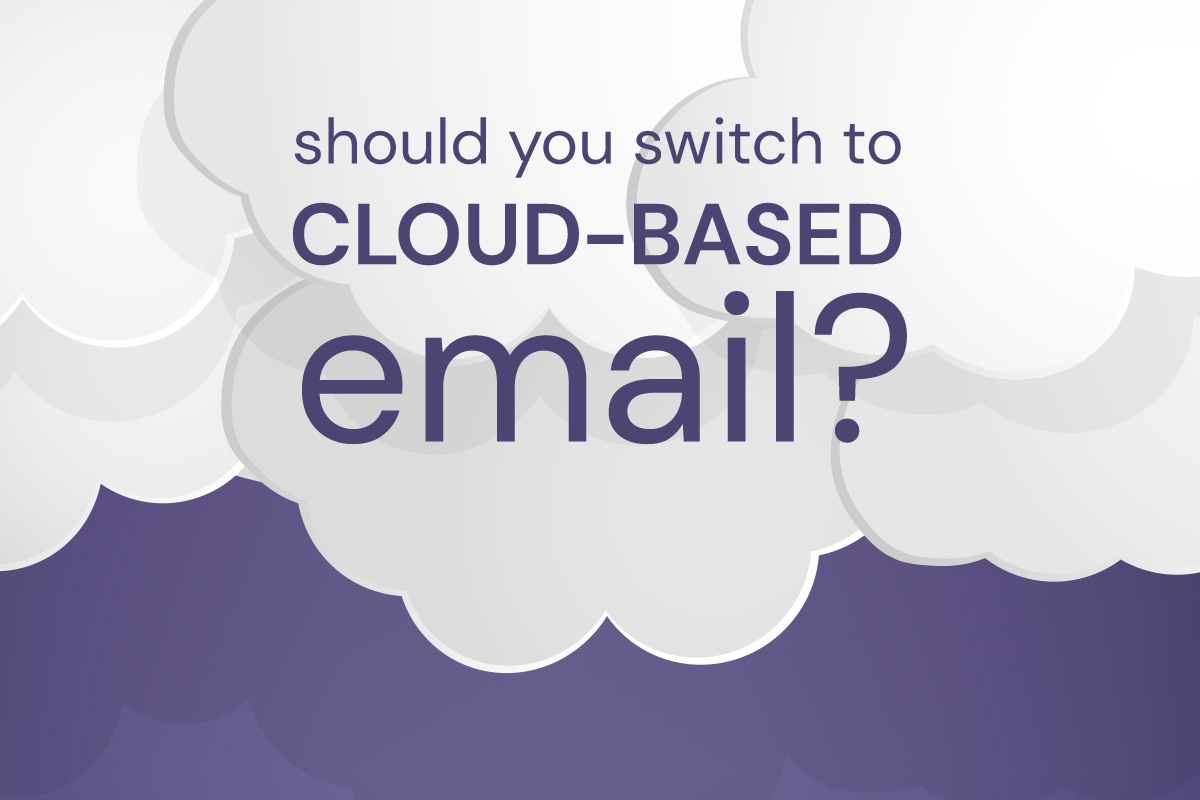If you have set up an email address on a brand-new domain in the last 3 years or so, this blog post is not for you. But if you’ve had business email for 7 or 8 years, you might still have POP or IMAP email. Some hosts, like GoDaddy, charge for each mailbox. Some hosts, like Hostgator, allow you to run as many mailboxes as you want from your hosting package. One of our clients has been running all his company’s email from a hosting package that costs a little over $50 per year for close to a decade. When the costs are that low, it does seem difficult to justify a move to cloud-based email that would cost (at minimum) about $50 per USER per year.
POP and IMAP
POP (or more accurately, POP3) email downloads email from your email provider’s server to your local machine or device. It is not synchronized, so if you delete old messages on your smartphone, they won’t be deleted from your desktop computer. This solution used to be acceptable when people generally checked their email on a single computer and that was it, but now most people need an email solution that synchronizes.
Another disadvantage of POP email in today’s world: if you set up your POP email to delete email from the server once you download it to your device, that email lives only on that device. If you don’t have a solid backup plan for that device, you stand to lose it forever.
IMAP email does synchronize. It lets you view your email folders the same way on any device. You can delete an email from your inbox on your laptop, and it won’t show up again on your smartphone or tablet.
People who’ve been using web-based email like Gmail are no doubt exasperated by this discussion. Shouldn’t your email just WORK, no matter what environment you’re using to check your email? Certainly, it is difficult to understand why premium consumer email service has veered off in so many different directions, and why these offerings have lagged behind free email services.
Cloud-Based Email Advantages
One reason we’ve advocated moving to Google for Business or Office 365 (or Exchange, if you don’t need Microsoft Office applications) for email is that they more closely replicate the experience of web-based email. If you’re using Google for Business email, it does work exactly like Gmail.
Another easy-to-overlook feature of these two cloud services is spam and virus protection. Both offer top-of-the-line spam detection and antivirus protection. Hosts offering POP and IMAP email simply don’t have the resources of Microsoft or Google. Email coming from IP addresses with a poor reputation or that match patterns for malicious messages will be blocked before they ever get into your Office 365 or Google for Business email. Microsoft, for example, selects messages with a suspicious pattern of delivery and executes their attachments in a ‘detonation chamber,’ a sandbox environment designed to understand the behavior of the attachment.
We’ve never experienced a problem with an email host losing POP or IMAP email to date. Again, though, Google’s and Microsoft’s infrastructure is much more robust than other email hosts, so you should feel confident that their backups are secure and more than adequately redundant. As a business, you never know when you’ll need email records for a lawsuit or for tax purposes; this is no place to cut corners. Similarly, we haven’t experienced any significant downtime with POP or IMAP email in recent years, but Google and Microsoft are better guarantors of reliability.
Lastly, if your organization has more than 3 or 4 employees, there is undoubtedly a need for administrative features. With Google for Business and Office 365, an admin panel allows you to suspend users, reassign data, and even block specific executable programs or script files that hackers are using to target their specific organization.
In summary—if you’re using POP email, at least switch to IMAP. We advocate switching to cloud-based email for all but the most shoestring of operations. If you depend on your email—and who doesn’t?—it’s time to move to a cloud-based email solution.






